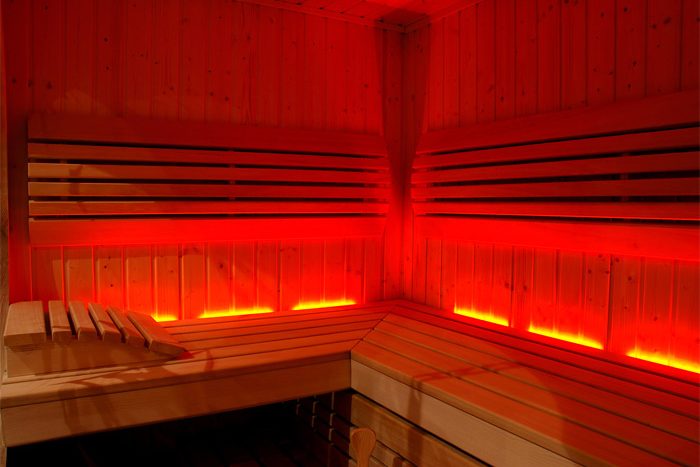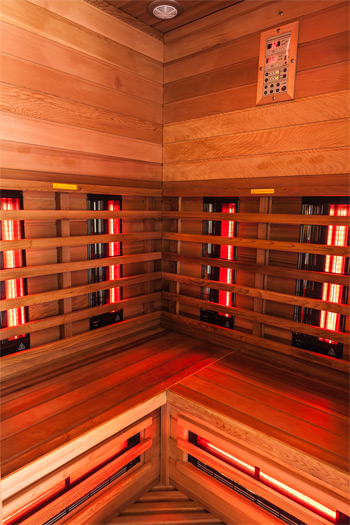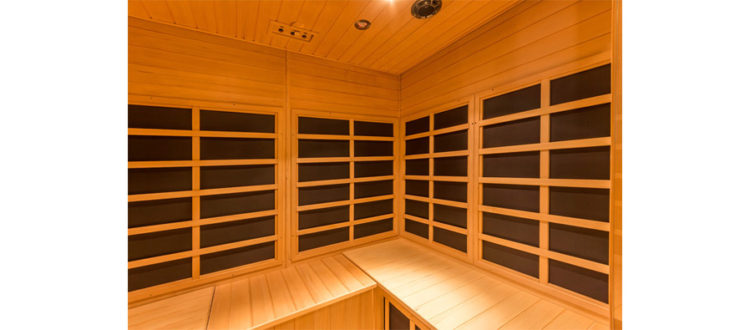- 21 Jul, 2016
- /
- Clearlight Infrared Saunas
- /
- No Comments
Why Sauna Materials Matter
Far infrared or FIR saunas vary in shape, size, material, and construction. Every element that makes up your sauna will have an effect on the level of health benefits (or risks) it provides. Some saunas contain potentially harmful materials as a cheap alternative to more quality sauna materials. These types of shortcuts aren’t worth investing in for the sauna you choose for your home or business.
Sauna Wood
First, consider the wood used in the sauna. FIR saunas are often made of spruce, redwood, hemlock, poplar, basswood or cedar. Cedar has long been the go-to choice and continues to be the top option of infrared saunas today. The best type of cedar is Western Red Canadian Cedar. Be sure the cedar used in the sauna is sustainable sourced and eco-friendly.
Cedar is resistant to cracking and splitting when heated and cooled since it’s a soft wood. It’s also the longest lasting sauna wood available. It naturally eliminates the presence of molds and bacteria – and important consideration as you decide on sauna materials, since the warm and moist area of a sauna is a prime environment for both. Finally, Western Red Canadian cedar is non-aromatic cedar and has a very faint cedar smell so even the most sensitive people will love their cedar infrared sauna.
Sauna Heaters
The heater in your sauna is an important sauna material for obvious reasons, since it will be responsible for the type of experience you receive in your sauna. There are two main types of heaters to consider: carbon and ceramic. Carbon panel heaters are larger in size, distribute infrared heat more evenly, and produce high quality, long wave infrared heat, but typically, at a weaker level.
Ceramic-based heaters emit a greater amount of infrared heat than carbon panels, but create hot spots in the sauna and produce lower quality shorter infrared waves. A combination of the two provides the best of both worlds providing beneficial long wave infrared heat and a lot of it.

Electromagnetic Fields or EMFs
Consider the amount of electromagnetic fields (EMF) when researching the varying factors and sauna materials for your FIR sauna. Continual exposure to high levels of EMFs can be harmful to the health.

In everyday life, we are subject to EMF from the moment we turn on the lights in the morning to our time spent in front of a computer during the day. Fortunately, the level of EMF exposure is relatively low in normal work or home environments, but adding any exposure puts us at risk for reaching a dangerous level. A low EMF infrared sauna ensures exposure rates stay within the threshold of what is considered safe.
Infrared heat has been used as a therapeutic benefit for years with the quality of sauna materials improving over time. As a result, you benefit from a better product and more optimal experience. This makes all the difference when choosing the sauna best suited for you.
 Canada
Canada Australia
Australia New Zealand
New Zealand Germany
Germany UK
UK EU
EU Ireland
Ireland Malaysia
Malaysia China
China Japan
Japan



